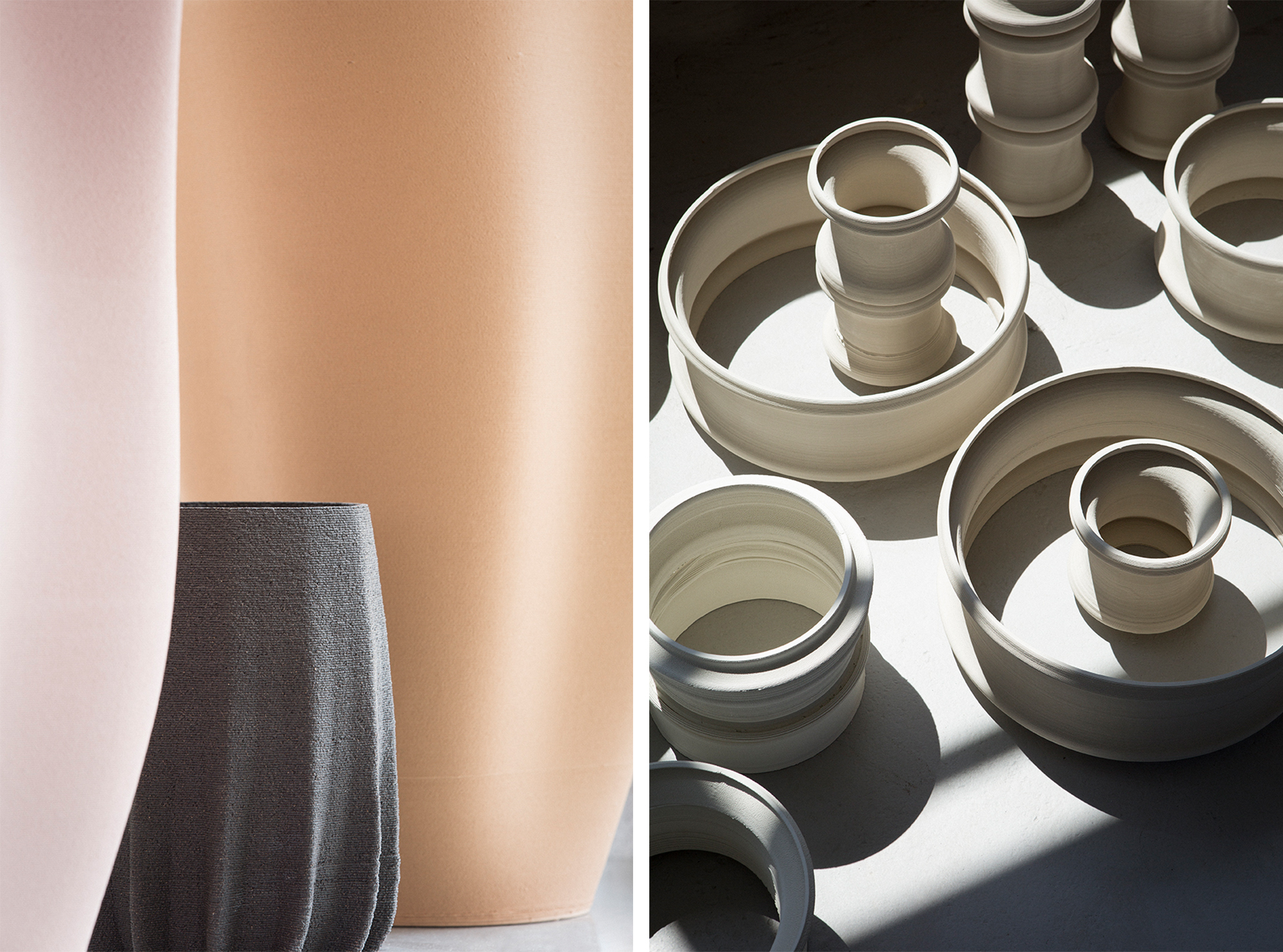When 3-D printers captured the world’s imaginations, around 2012, Olivier Van Herpt was unimpressed. At the time, he was in the middle of his academic studies at the Design Academy Eindhoven, in the Netherlands, focusing on product design and minoring in ceramics. “[3-D printing] is such a beautiful process, which I was really fascinated by,” he says. “But the thing was, you had to wait almost eight hours for a piece ten centimeters high.” Before university, Van Herpt had never laid his hands on clay, but had always admired the possibilities that came out of the natural material. Surely this high-level technology and ancient craft could coexist, he thought. And so, he began tinkering.
Olivier Van Herpt Is a Free-Dimensional Thinker
Meet the 28-year-old designer who is radically transforming one of the world's oldest art forms.
Meet the 28-year-old designer who is radically transforming one of the world's oldest art forms.
Photos by Frederik Vercruysse July 20, 2017

In 2013, after countless hours of experimentation, he built a machine capable of printing out-of-the-bag clay. A year later, his printer could not only create 3-foot-tall vases, it was also unenclosed. Unlike traditional machines, it allowed Van Herpt to interact with the product while it was being printed. “This creates a collaboration between the machine and the user,” he says.
One of his current projects would not be possible without such collaboration. He is printing a clay portrait, to be cast in bronze. The machine requires help in sculpting detailed parts of the face, such as the nose and ears. Van Herpt pauses the printer, and, while the clay is still doughy, rounds out the nostrils, bridge, and lobes. “With all the hype in the past few years, there’s a misconception about 3-D printing—perhaps from the media—that if you put a file into a machine, it’ll come out exactly how you want,” he says. “That’s almost never the case.”

One of his most exciting developments this year, Van Herpt has made his custom-made3-D printer available to the masses, through a separate but related company he’s started, Olivier Van Herpt Lab. “Some people ask me why I’ve done this: ‘What if people copy you?’” he says. “It’s not about keeping it all to myself. For me, I’m really curious about what other people will do with it. How is this machine going to impact the ceramics industry? Or what about universities that want to do material research?” Having just opened up preorder, he may soon be shown the answers.